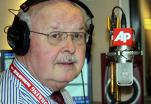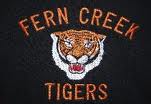 As I was examining my war trophy, three Marines from Bravo Company came by and wanted their picture taken with Saddam.
As I was examining my war trophy, three Marines from Bravo Company came by and wanted their picture taken with Saddam.
 “Only if you’ll take mine,” I said.
“Only if you’ll take mine,” I said.
 After the photo-op, they disappeared into the building. The bronze bust weighed at least 50 pounds. It was too heavy to lug around, as I searched the palace for other souvenirs. When I returned a half hour later to pick up my trophy, it was gone.
After the photo-op, they disappeared into the building. The bronze bust weighed at least 50 pounds. It was too heavy to lug around, as I searched the palace for other souvenirs. When I returned a half hour later to pick up my trophy, it was gone.
No one, including the Battalion Commander or Sgt. Major had seen it. To this day, as far as I know, it hasn’t surfaced.
After the war, I visited Bravo Company at Camp Pendleton and inquired of the company commander the whereabouts of the three jarheads I suspected of stealing my war trophy. The commander gave me their hometown addresses and telephone numbers.
 The first two I called swore on their mothers’ graves they didn’t steal the bust. So did the third guy, but he said if had wanted to, it would have been easy.
The first two I called swore on their mothers’ graves they didn’t steal the bust. So did the third guy, but he said if had wanted to, it would have been easy.
 He told how Marines spirited contraband out of Iraq by hiding it in the fuel tanks of amphibious assault vehicles. The one hundred gallon tanks were inside the tracks. Access was easy. Lift a couple of latches, drop in the goodies and close the lid. These numbered vehicles were shipped back to Pendleton after the war and they weren’t subjected to searches by U.S. Customs officials.
He told how Marines spirited contraband out of Iraq by hiding it in the fuel tanks of amphibious assault vehicles. The one hundred gallon tanks were inside the tracks. Access was easy. Lift a couple of latches, drop in the goodies and close the lid. These numbered vehicles were shipped back to Pendleton after the war and they weren’t subjected to searches by U.S. Customs officials.
It has been more than seven years since that encounter in Baghdad, and I’m still waiting for Saddam to show up on eBay.
The real Saddam was eventually hanged for his crimes against humanity and is buried in his hometown of Tikrit, where he was found hiding in a hole in the ground in December 2003.
 His two sons who were with him at the al-Azimiyah Palace are also dead. They and one of Saddam’s grandsons were cornered in a so-called “safe house” and slaughtered by U.S. forces when they refused to surrender.
His two sons who were with him at the al-Azimiyah Palace are also dead. They and one of Saddam’s grandsons were cornered in a so-called “safe house” and slaughtered by U.S. forces when they refused to surrender. 
 Those who live by the sword, usually die by the sword and so it was with Saddam Hussein and his ruthless sons.
Those who live by the sword, usually die by the sword and so it was with Saddam Hussein and his ruthless sons.
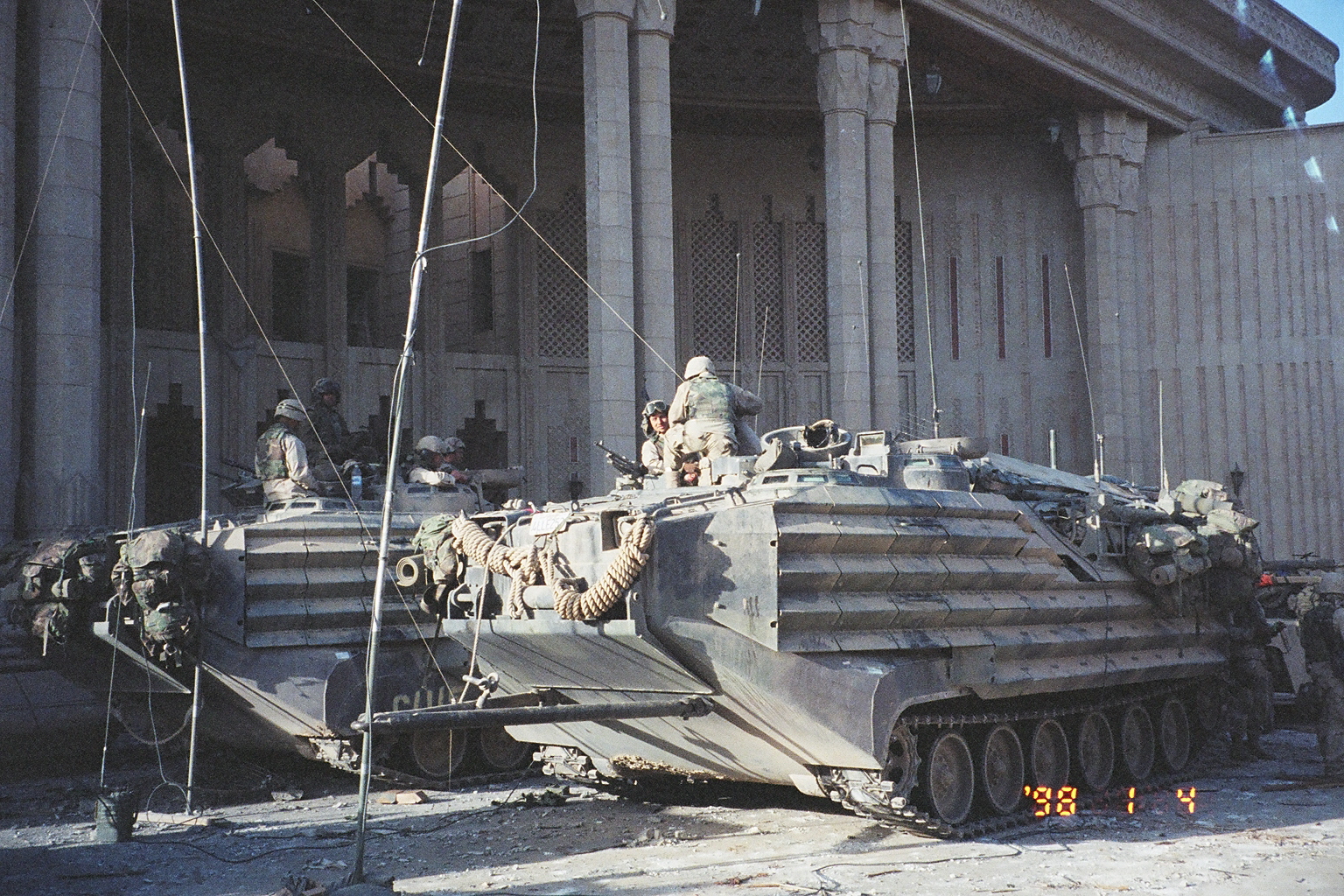
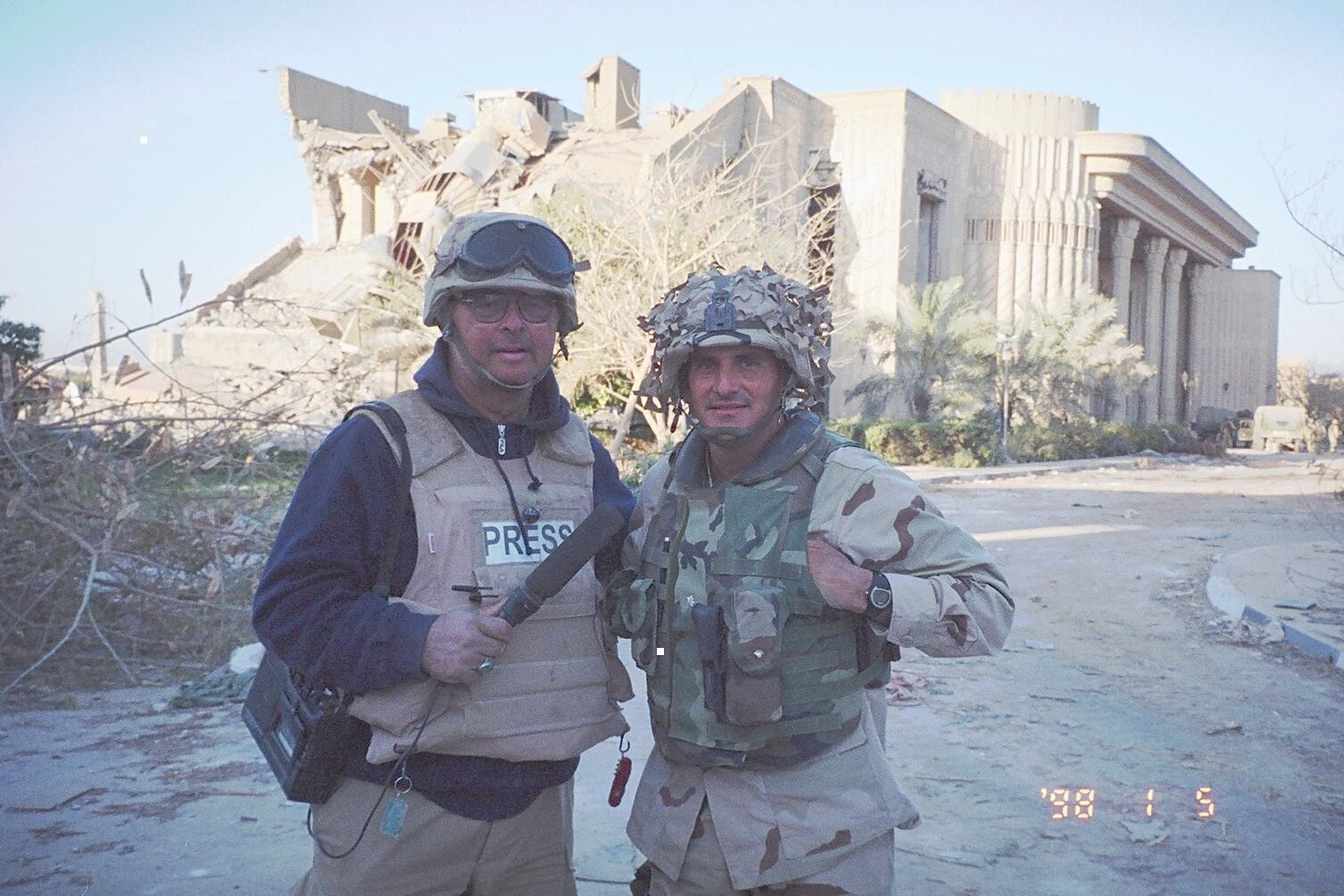
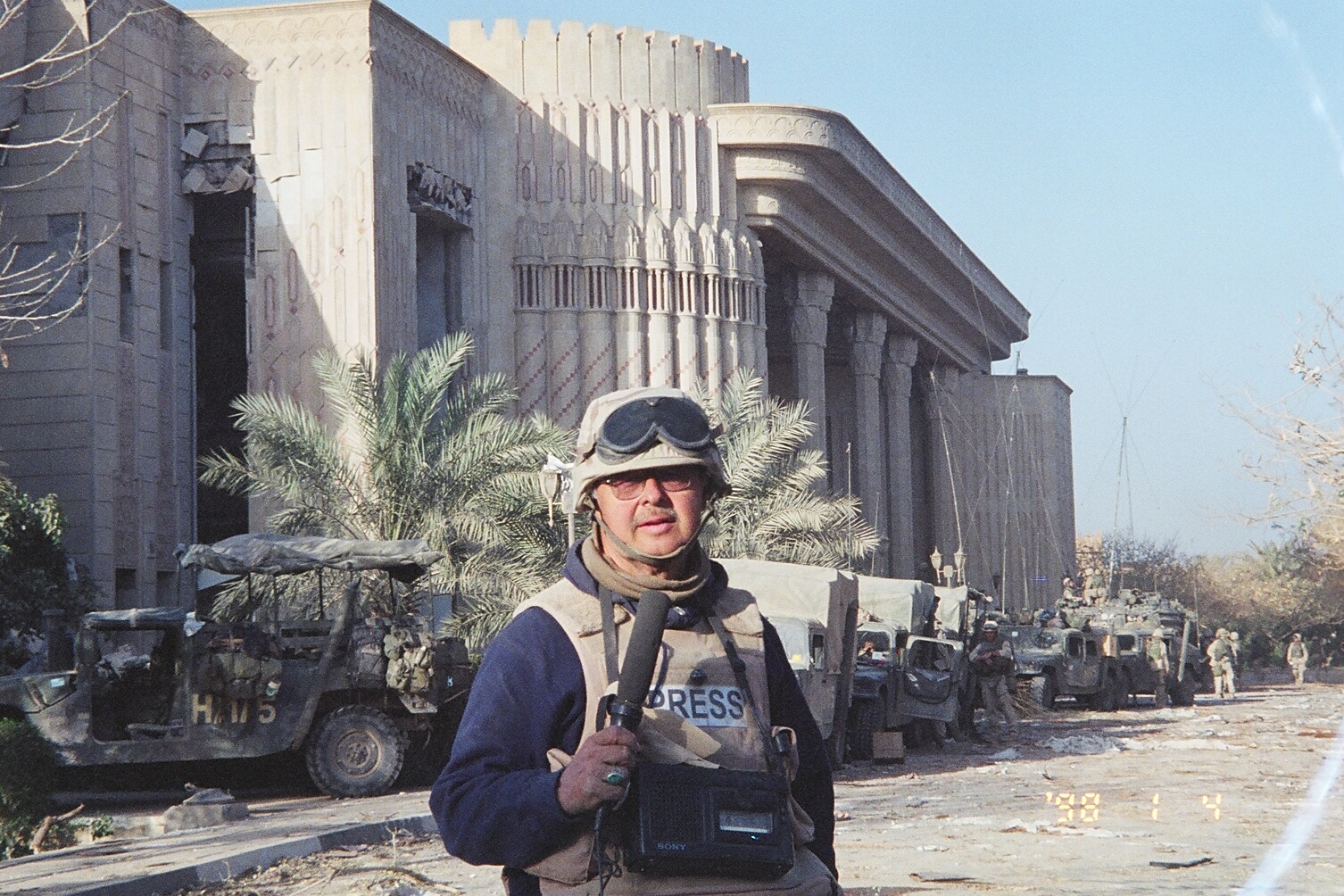
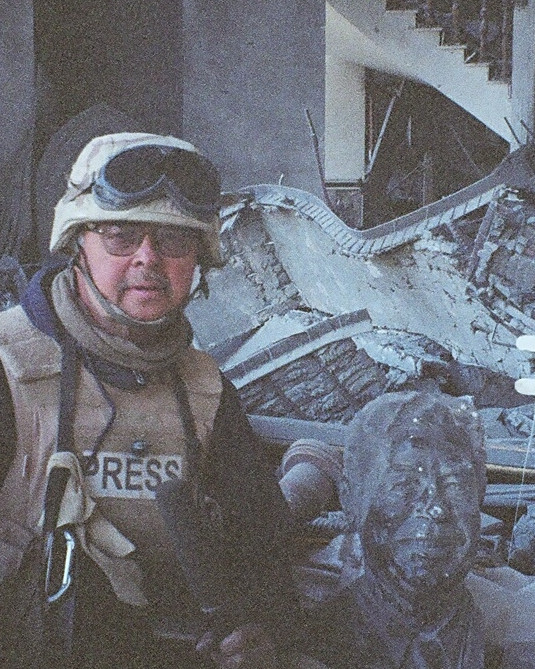
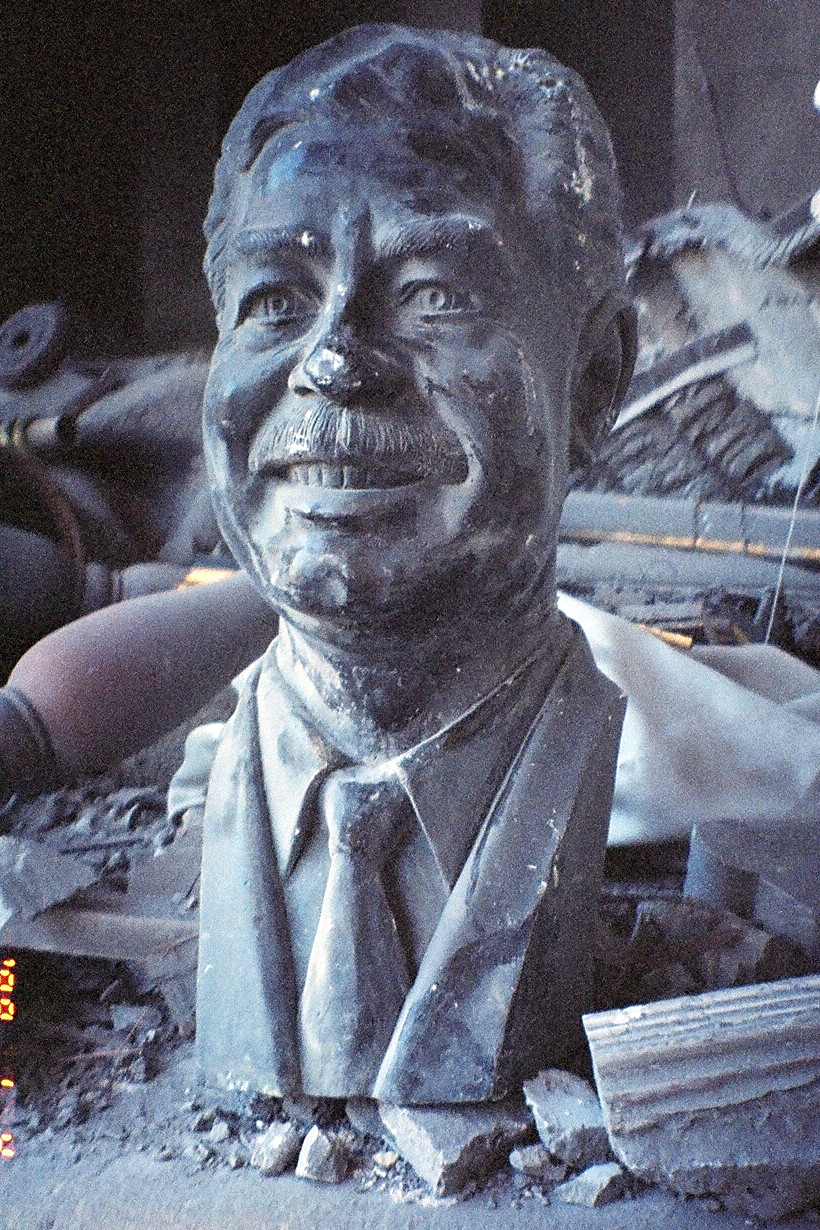
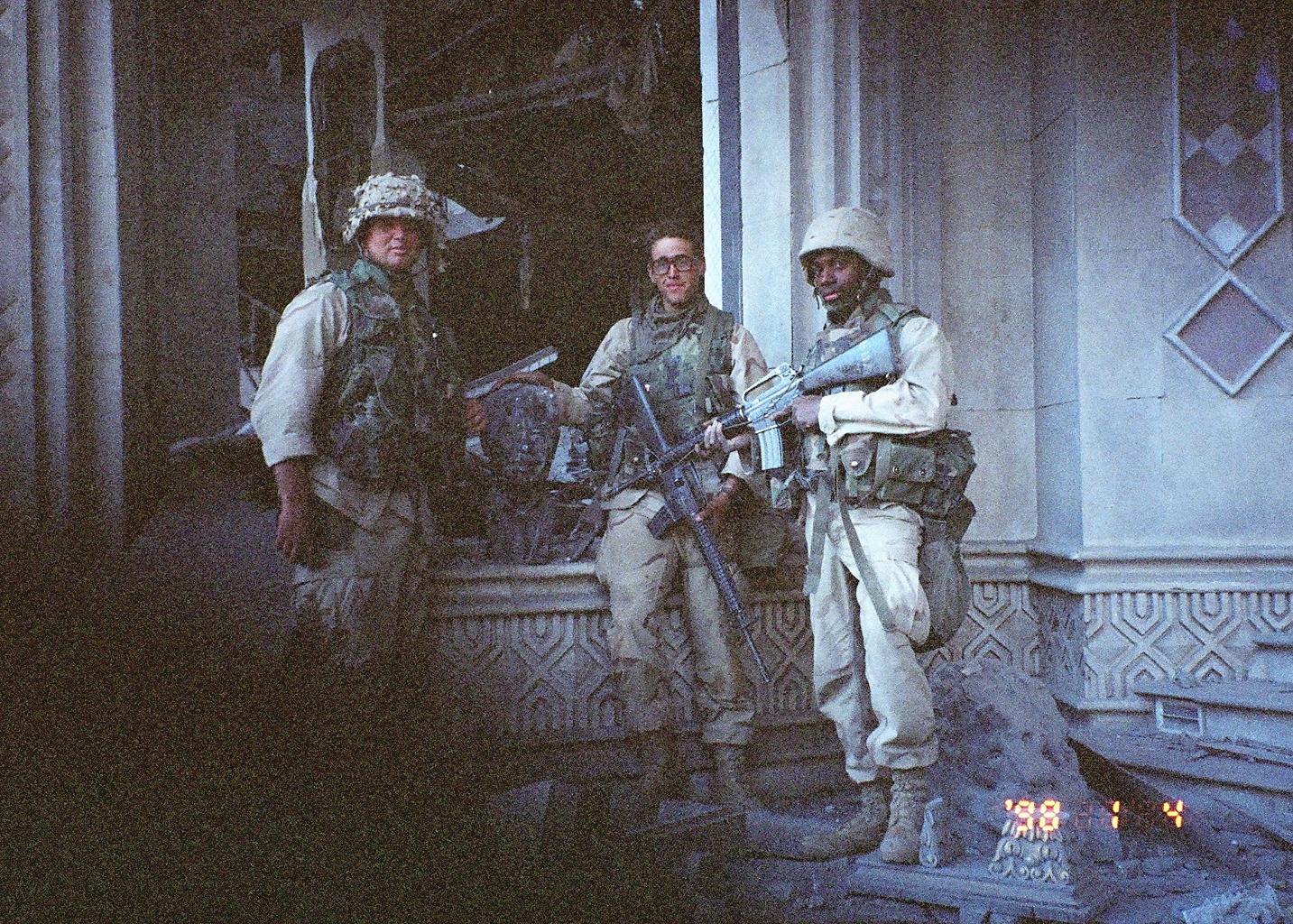
During the invasion of Iraq, Ross found himself eye-to-eye with the chief villain, who stared without blinking.
In December, 2002, I went to Associated Press headquarters New York for a final “Council of War,” with representatives from management, who had chosen 167 of 4,000 AP employees worldwide, to cover the coming conflict with Iraq.
 At the meeting, each of us was asked what goals we had. When it was my turn, I boldly replied, “To be the first AP correspondent into Iraq and to be there when Saddam Hussein is captured.”
At the meeting, each of us was asked what goals we had. When it was my turn, I boldly replied, “To be the first AP correspondent into Iraq and to be there when Saddam Hussein is captured.”
 It was so quiet in the conference room you could have heard a pin drop. How dare a guy from the broadcast side of the house speak in such bold terms to veterans on the print side? Later over lunch, the deputy managing editor asked me how I proposed to achieve those lofty goals.
It was so quiet in the conference room you could have heard a pin drop. How dare a guy from the broadcast side of the house speak in such bold terms to veterans on the print side? Later over lunch, the deputy managing editor asked me how I proposed to achieve those lofty goals.
 “By pulling some strings,” I replied.
“By pulling some strings,” I replied.
 From past conflicts I’d covered I knew that the Marine Corps would lead the way into Iraq. Although the Army was supposed to get the glory for invading Kuwait and driving the Iraqi army out of that tiny Gulf kingdom, during the Gulf War in 1991, the Marine Corps stole the show when Task Force Ripper jumped the gun and beat the Army to Kuwait City. The man responsible was then-Lieutenant Colonel James N. Mattis, the commander of Task Force Ripper.
From past conflicts I’d covered I knew that the Marine Corps would lead the way into Iraq. Although the Army was supposed to get the glory for invading Kuwait and driving the Iraqi army out of that tiny Gulf kingdom, during the Gulf War in 1991, the Marine Corps stole the show when Task Force Ripper jumped the gun and beat the Army to Kuwait City. The man responsible was then-Lieutenant Colonel James N. Mattis, the commander of Task Force Ripper.
Fast forward 12 years and Mattis, now a major general, commanded the First Marine Division. My old friend from the sands of Saudi Arabia was positioned to help me achieve at least the first goal.
 When we spoke by telephone on the eve of his departure from Camp Pendleton, California, Mattis gave me the satellite phone number of his public affairs officer, Captain Joe Plenzler, and told me to contact him when I got to Kuwait City.
When we spoke by telephone on the eve of his departure from Camp Pendleton, California, Mattis gave me the satellite phone number of his public affairs officer, Captain Joe Plenzler, and told me to contact him when I got to Kuwait City.
Plenzler was the man who decided which units in the division would accept embeds, that is, correspondents, both print and broadcast, and camera crews, still and video, who would accompany the assault battalions.
 When Mattis asked me where I wanted to be, I told him, “On the tip of the spear.”
When Mattis asked me where I wanted to be, I told him, “On the tip of the spear.”
 He apparently forwarded my request to Plenzler, because on March 11, when nearly a hundred members of the media assembled in the ballroom of the Kuwait Hilton, to receive their assignments, I smiled when Capt. Plenzler said, “Simpson, AP, you’re assigned to 1st Battalion, 5th Marines.”
He apparently forwarded my request to Plenzler, because on March 11, when nearly a hundred members of the media assembled in the ballroom of the Kuwait Hilton, to receive their assignments, I smiled when Capt. Plenzler said, “Simpson, AP, you’re assigned to 1st Battalion, 5th Marines.”
 That unit fought on Pelileu in the South Pacific, Chosin Reservoir in Korea, and in Hue, the old imperial capital of Vietnam It has a history of always being on the tip of the spear.
That unit fought on Pelileu in the South Pacific, Chosin Reservoir in Korea, and in Hue, the old imperial capital of Vietnam It has a history of always being on the tip of the spear.
 After two weeks of training about 30 miles below the Iraq border, 1/5 got the call to invade Iraq on the afternoon of March 20, when the Iraqis started torching the Rumalyah Oil Fields.
After two weeks of training about 30 miles below the Iraq border, 1/5 got the call to invade Iraq on the afternoon of March 20, when the Iraqis started torching the Rumalyah Oil Fields.
 Twenty-one days later, after fighting its way up the gut of Iraq to Baghdad, 1/5 was “fragged” to capture a very important person Regimental Combat Team Five sent the coded message to 1/5, as the battalion paused on the “Outer Ring of Death,” a freeway that runs around the Iraqi capital.
Twenty-one days later, after fighting its way up the gut of Iraq to Baghdad, 1/5 was “fragged” to capture a very important person Regimental Combat Team Five sent the coded message to 1/5, as the battalion paused on the “Outer Ring of Death,” a freeway that runs around the Iraqi capital.
 At sundown, the battalion was ordered to move north and then strike south into the heart of Baghdad. The objective was the al-Azimiyah Palace on the Tigris River. Saddam Hussein had been spotted on the street near the palace as angry Iraqis were pulling down his huge steel statue in Firgos Square.
At sundown, the battalion was ordered to move north and then strike south into the heart of Baghdad. The objective was the al-Azimiyah Palace on the Tigris River. Saddam Hussein had been spotted on the street near the palace as angry Iraqis were pulling down his huge steel statue in Firgos Square.
 The battalion turned south at 1:00 a.m. An hour later, a rocket-propelled grenade (RPG) flew across the front of the column and exploded against the side of an Iraqi fuel tanker. The resulting explosion turned night into day, illuminating my Humvee and 75 other vehicles.
The battalion turned south at 1:00 a.m. An hour later, a rocket-propelled grenade (RPG) flew across the front of the column and exploded against the side of an Iraqi fuel tanker. The resulting explosion turned night into day, illuminating my Humvee and 75 other vehicles.
 For the next five hours, the armored column was raked with machinegun fire and more than a thousand rocket-propelled grenades, of which 336 hit home, wounding dozens of Marines in front and back of me.
For the next five hours, the armored column was raked with machinegun fire and more than a thousand rocket-propelled grenades, of which 336 hit home, wounding dozens of Marines in front and back of me. 
 Four RPGs were fired at my Humvee, but they flew harmlessly over the hood, under my seat and behind the hatchback. Two were so close, I could taste the rocket propellant as they roared past the vehicle.
Four RPGs were fired at my Humvee, but they flew harmlessly over the hood, under my seat and behind the hatchback. Two were so close, I could taste the rocket propellant as they roared past the vehicle.
 At 6:30 am after surviving the world’s longest “drive-by shooting,” my Humvee pulled through the palace gates behind Bravo Company’s command tracked-vehicle.
At 6:30 am after surviving the world’s longest “drive-by shooting,” my Humvee pulled through the palace gates behind Bravo Company’s command tracked-vehicle.
 Leaping out, I sought cover behind the colonnade, seeking shelter from mortars falling inside the compound. While there, I filed a “live” report to AP in Washington. Turning around after the satellite transmission, I found myself staring at Saddam Hussein.
Leaping out, I sought cover behind the colonnade, seeking shelter from mortars falling inside the compound. While there, I filed a “live” report to AP in Washington. Turning around after the satellite transmission, I found myself staring at Saddam Hussein.
 A bust of the Iraqi dictator was sitting upright in the rubble. It appeared to have fallen from a second floor office, when a 2,000 pound satellite-guided bomb hit the building.
A bust of the Iraqi dictator was sitting upright in the rubble. It appeared to have fallen from a second floor office, when a 2,000 pound satellite-guided bomb hit the building.
 At first, I just stared at the black bust and made no attempt to get close to it, because I feared it might be booby-trapped. Eventually, curiosity got the best of me and I crawled over to the ledge on which it was setting.
At first, I just stared at the black bust and made no attempt to get close to it, because I feared it might be booby-trapped. Eventually, curiosity got the best of me and I crawled over to the ledge on which it was setting. 
 After carefully probing the rubble with a hunting knife, I determined it wasn’t wired. But there was the chance someone had pulled the pin on a grenade and set the statue down on the spoon. Lift the bust and BOOM, you’re dead. Some more probing with my knife told me there was no grenade beneath the base, so I picked it up.
After carefully probing the rubble with a hunting knife, I determined it wasn’t wired. But there was the chance someone had pulled the pin on a grenade and set the statue down on the spoon. Lift the bust and BOOM, you’re dead. Some more probing with my knife told me there was no grenade beneath the base, so I picked it up.
Saddam's Teflon reputation held up for awhile, as his bust escaped the palace bombing with only a few cuts and scrapes. Ross is confident the bust will show up on eBay or Craig's List, with a former Marine as the seller.
Ross with Lt. Colonel Frederick Padilla in front of the palace after his battaltion, 1/5, seized it after a running gunbattle with Fedeyeen guerillas, Bathist party members and Republican Guard troops loyal to Saddam. Padilla is now a Brig. General in command of the Marine base at Parris Island, SC.
Two Marine Amphibious Assault Vehicles stationed at the entrance of
al-Azimiyah Palace. It was a vehicle such as this that could have spirited the Saddam bust out of the country in its fuel tank.
Ross delivers a live report outside the palace, after the successful Marine assault. By now, the bust has disappeared, as you can detect by the subtle look of disappointment on Ross's face.
Ross Survives Iraqi Drive-By Shooting, But Loses Bust in Confusion at the Palace
Creeker Chronicles
A compendium of anecdotes and stories by
Contributing Editor Ross Simpson





